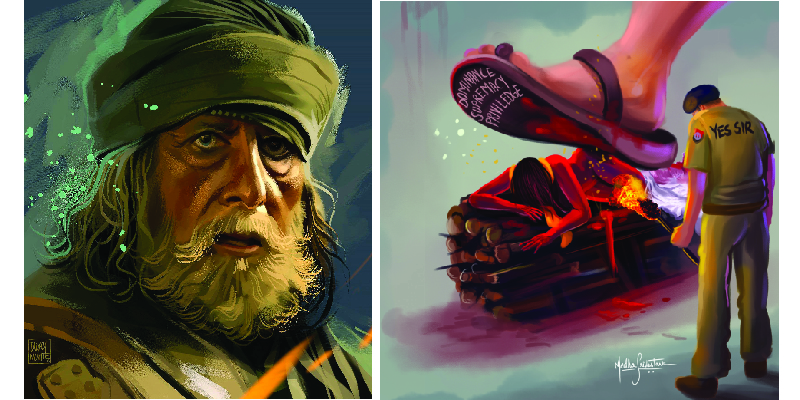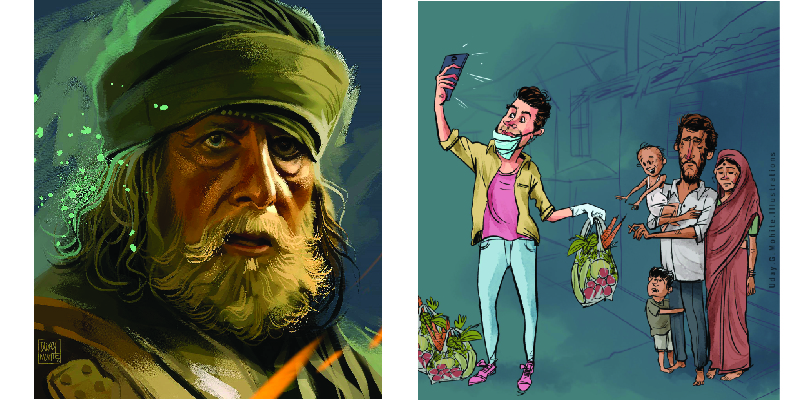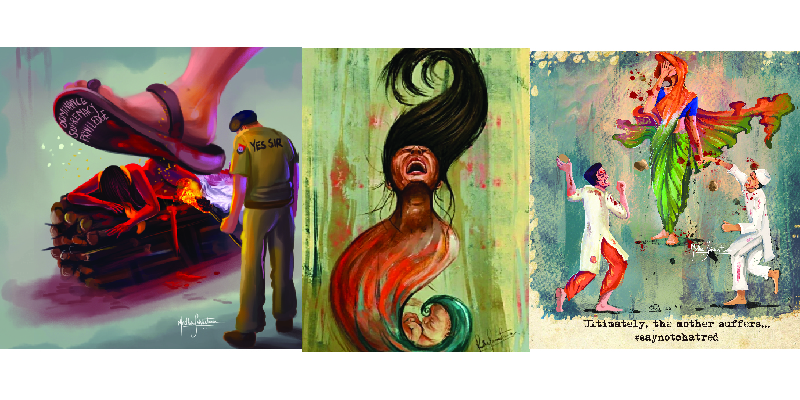
Plagiarism is spreading ever so highly in today’s world of social media. Stealing, or passing off someone else’s ideas as one’s own, is not a new trend. It has, however, grown expansively within the last few years, especially in the art sector.
Art inspires art. Every piece of artwork finds itself influenced by another. Many would argue that no art is original. Then where exactly does one draw the line between inspiration and plagiarism?
Plagiarism might be more common than we think. Most of the artists have atleast some art of theirs that has been shared or passed off as someone else’s without being given credits for it.
Illustrator Uday Mohite said, “Unfortunately till now almost 90 per cent of my works have been stolen and they have been published in their name. A renowned art college had an internal digital media campaign and the result was to be announced on social media platform. One of their students copied/stole my painting of Amitabh Bachchan from the movie Thugs of Hindostan, removed my signature watermark and ended up winning the competition with this stolen art piece. The college had showcased the picture on their website as a quality work testimony of their student. This was wrong on so many accounts.”

Deeply saddened by the incident Mohite thought that this gives a wrong picture to the future candidates of the quality that college produces in students. He urges all to be on a lookout and protect their works from the fakes.
Another illustrator and a popular cosplayer Medha Srivastava faced the same issue recently. Lot of her work has gone viral since she focuses a lot on social issues. Her work has a voice and she feels humbled when people share it to raise their voice through her artwork. But she faced some negative incidents.
“A lot of times my artwork is reposted on multiple pages without giving credits. What’s worse is when people Photoshop my signature and put their watermarks.” Her recent artwork on the Hathras case became an internet sensation and was on every social media platform possible, but there were also versions of plagiarism. “It baffles me to see how people are not afraid of getting caught. And it is mostly because of not fearing the law. Hence artists need to take copyrights very seriously. As much as I was honored to see my work getting love and appreciation, I was also hurt to see people spoil my work and have no ethics of crediting it,” she added.
Both the artists feel that people should recognise the artists’ efforts that have been put in the artwork. Srivastava reported around 20 accounts that plagiarised her paintings. “I understand an original always remains an original. But as an audience we need to learn art ethics. You cannot reuse someone’s work without their permission,” she further mentioned.

The online space is a good medium for creators to make their work known to a global audience. But with people plagiarising content so easily, online copyright becomes necessary if one needs to feel fully secure about their work. “The Indian Government has defined different laws for the safeguarding of Intellectual Property Rights in order to cover all threats of original art forms. There is one such IPR that covers all the artworks, and that is Copyright. If you want to get a legal shield for your original artwork, you must apply for copyright registration. Once you apply for copyright of your original artistic work, the same shall be scrutinized by the copyright authority in order to check the originality of artistic work. Generally it takes three to four months for assessment. Once the assessment is successfully done, the copyright authority shall issue a certificate in the name of the artist,” mentioned Srivastava.
She also explained the benefits of copyrighting one’s work and how one can take legal actions against people or companies because you own the royalties. One can also allow or endorse other artisans or a trader to utilise their artistic work for commercial and other purposes against regular payment of royalty. Also, one can sell his creations to third parties at an art gallery for a handsome price. Along these lines, the artist can eventually grow as their own boss and can allow their clients to use their work or to modify their creation according to their own terms and conditions.
Most of the artists are more than okay with their work being an inspiration, or being reshared by others, as long as they are given the due credit. But plagiarising is like a virus, bad for the artist and the art society as a whole.

